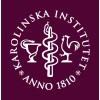
The Early Integrated Intervention for Child Brain-developmental Disorders in China
Brain Developmental DiseasesAutism Spectrum Disorder2 moreThis study is focused on developing the early integrated intervention for child brain-developmental disorders, including globe developmental delay (GDD), autism spectrum disorder (ASD), and attention deficit-hyperactivity disorder (ADHD), in China.

Cognitive-Behavioral Therapy for Adults With ADHD: A Qualitative Study
Attention Deficit Hyperactivity DisorderThis is a qualitative study of participants who have taken part in a randomized controlled trial (RCT) of a new treatment protocol based on cognitive-behavioral therapy for adults with attention deficit/hyperactivity disorder predominantly inattentive presentation. The purpose of the qualitative study is to explore participant perceptions of taking part in the RCT to further develop and improve the new treatment protocol.

A Controlled Study of Solriamfetol for ADHD in Adults
Attention Deficit Hyperactivity DisorderA double-blind, placebo controlled study of solriamfetol for adults age 18 to 65 with diagnosis of Attention Deficit Hyperactivity Disorder.

Pilot Feasibility Study of Neurofeedback for Attention Deficit Hyperactivity Disorder (ADHD)
Attention Deficit Hyperactivity DisorderNeurofeedback is increasingly advocated for treatment of ADHD despite a thin evidence base. The numerous open and partially controlled studies suffer serious design flaws. In particular, there is no published double-blind randomized clinical trial (RCT), which would control for experimenter and participant biases. The primary aim of this R34 pilot study is to conduct a small-scale pilot with 39 8-12 year-olds with ADHD to prepare for such a larger RCT.

Cognitive Training in Attenuating Attention Deficits/Child Treatment for Cancer
LeukemiaLymphoma1 morePrimary Objectives: To evaluate the feasibility of enrolling children and adolescents with newly diagnosed brain tumors, leukemia, or lymphoma in a program designed to prevent the academic and cognitive declines that commonly result following central nervous system (CNS) disease and treatment. Hypothesis 1: Despite the rigors of disease and treatment, children and adolescents will be able to participate in the CTP while they are receiving treatment for cancer. The high participation of our patients in routine school activities during treatment suggests that they will have the energy and interest required to participate in cognitive training. To evaluate whether a Cognitive Training Program (CTP) might be helpful to patients in preventing attention deficits that commonly result following CNS disease and therapy. Hypothesis 2: Patients in the CTP arm of the study will show fewer declines in neurocognitive performance at the end of training and again six months later, as compared with the control group who will receive the usual services provided by the Education Program in Pediatrics. To explore the relationship between CTP treatment compliance and stability/decline in cognitive and academic performance in children and adolescents who are being treated for brain tumors, leukemia, and lymphoma. Hypothesis 3: Level of compliance with CTP treatment will be predictive of a patient's performance on neurocognitive measures.

Treatment of Prisoners With Attention Deficit Hyperactive Disorder in Trondheim Prison
Attention Deficit Hyperactivity DisorderThe treatment of ADHD in jail will help the prisoners in their rehabilitation process

Electroencephalogram (EEG) Study of Inattention Following Treatment With AKL-T01
Attention Deficit Hyperactivity DisorderThis study is a single arm, open-label, pilot study to assess midline frontal theta (MFT) power as measured by stimulus-locked electroencephalogram (EEG) before and after treatment with AKL-T01 for improving attention in pediatric participants ages 8-12 years old with attention deficit hyperactivity disorder (ADHD).

PART B: Efficacy and Safety of AEVI-001 in Children and Adolescents With ADHD and Without mGluR...
Attention Deficit Hyperactivity DisorderThis is PART B of a 2-part, 6-week, double-blind, dose-optimization, parallel-group study in children and adolescents (ages 6-17 years) with ADHD with and without CNVs in specific genes implicated in glutamatergic signaling and neuronal activity. PART B will assess subjects who do not have CNVs in any of the specific gene mutation(s) implicated in glutamatergic signaling and neuronal connectivity.

Process-instructed Self Neuro-Modulation (PRISM) for Attention Deficit/ Hyperactivity Disorder -...
Attention Deficit Hyper ActivityThis is a single-arm, open-label feasibility study. A maximum of 30 participants will be enrolled. 15 participants will be assigned and will undergo a novel neurofeedback intervention, targeting down-regulation of deep limbic structures, specifically the amygdalae. Participants will complete 12 neurofeedback sessions delivered twice weekly over 6 consecutive weeks. The intervention will be delivered via the PRISM platform.

Individualized Precise Localization of rTMS on Precentral and Parietal Gyrus
Attention Deficit Hyperactivity DisorderAttention deficit hyperactivity disorder (ADHD) patients have some problem with sustained attention. The dorsal anterior cingulate cortex (dACC) plays a key role for attention control. It has been found that the dACC has strong functional connectivity with ipsilateral motor area and parietal gyrus. Repetitive Transcranial Magnetic Stimulation (rTMS) is a sage and painless technique to activate cortical areas. The deep brain structure can be activated via stimulating superficial cortex by rTMS. For investigating the mechanism of sustained attention, this project is using functional magnetic resonance imaging (fMRI) to individualize the precise localization in motor area and parietal gyrus, and combining rTMS to activate the dACC.
